Bottle brush trees (Callistemon) are evergreen shrubs and fast-growing plants with colorful flowers that are carried in dense spikes or in round clusters that consist mainly of long stamens that are bristle-like. Its bristle-like stamens are responsible for its name ‘bottle brush.’
Learning how to grow and care for bottle brush tree is a skill all experienced gardener should have.
Excitingly, a bottlebrush requires minimal care and yet produces long, colorful flowers that have spiky filaments.
In today's article, you'll not only learn how to grow a bottlebrush tree, but we're also going to show you the best ways to care for the bottlebrush tree for the best result.
Read Also: How to Grow a Dwarf Banana Tree
Table of Contents
Overview of Bottle Brush Tree (Callistemon)
The bottle brush tree is a member of the Myrtaceae family and originates from the Eastern and Southern Australia.
Bottlebrush trees have a close semblance with the paperbark melaleuca, whose flower spikes are shaped like the bottle brush tree.
Other common names of bottle brush are crimson bottle brush, red bottlebrush, yellow bottle brush, weeping bottle brush, and bottle brush shrub.
Bottlebrush trees have their flowers carried in dense spikes that are made up of long stamens in the forms and shape of bristles.
Some bottle brushes occur naturally dense and compact; hence they are used to make informal hedges, while other bottle brushes are sparse and open; thus they can be pruned down to become small trees.
Bottle brush trees can tolerate waterlogged soils, saline or alkaline soils, although they sometimes suffer from yellowness of leaves with green veins.
There are a variety of cultivars of bottle brush trees such as the red bottle brush, dwarf bottle brush, and weeping bottle brush. All of these cultivars require the same care and maintenance.
Bottlebrush trees are perennial plants that are attractive to hummingbirds and are resistant to diseases and pests. To optimally thrive, it requires little watering and full sunlight.
How to Grow Bottle Brush Tree
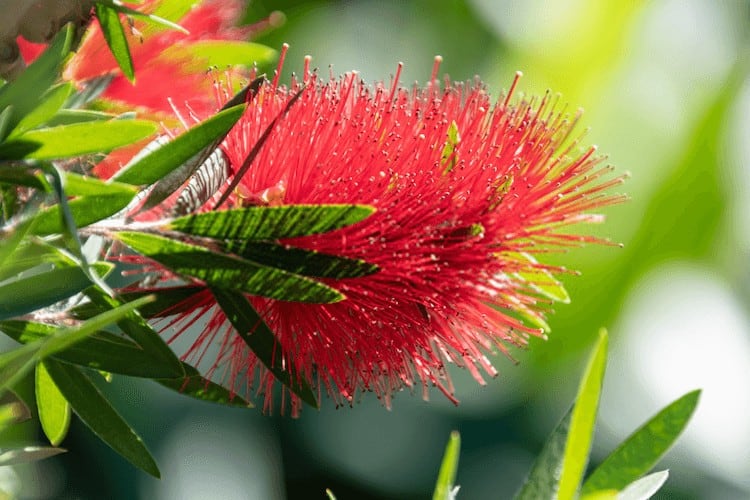
Bottlebrush trees are best grown in sunny areas. Therefore you should position the plant in an area where it would receive full sunlight.
When it comes to suitable soil type for bottle brush tree, soils that are well-drained and rich in compost are the best. Before the planting time, if the soil is poor, you can enrich it with compost.
To test for soil’s drainage before planting bottle brush, you dig a 12 inches x 12 inches hole in the area you wish to plant your bottle brush.
Pour water into the hole until it gets filled up and allow it drain after the water has drained, filled the hole again with water, and then time how long it takes for the water to get drained.
As a general rule of thumb, well-drained soil will lose water at a rate of 1 inch per hour. A loose soil such as sandy soil will drain faster.
A slower rate of drainage shows that the soil is a poor draining soil and needs its drainage improved.
If the plant area has a poor drainage soil, you will need to plant the bottle brush in a raised bed, or plant it alongside plants that are tolerant of wet conditions.
The soil’s pH should be slightly alkaline, with a pH value of about 6 to 8 on the pH scale. Most garden soils have their ph values with the ranges of 6 to 7.
However, if you want to be sure of the soil’s pH value, you can test the soil pH with a pH testing kit or probe. This kit is usually inexpensive.
If you discover upon testing the soil’s pH that the soil’s pH is unsuitable for bottle brush growth, you can increase the pH to make it more alkaline by adding pellets of limestone. You can also raise the pH by adding chelated iron or aluminum sulphate.
Read Also: Best Time to Plant Okra in Arkansas
Growing Bottle Brush Tree in the Ground
Step 1: Dig a hole that is about 2-3 inches wide and has the same length as the root ball of the bottle brush tree.
Step 2: Carefully remove the bottle brush from the nursery pot. If the plant refuses to come out of the pot easily, cut through the pot without damaging the plant. Using your fingers, loosen the feeder roots from the surface of the root ball.
Step 3: Place the bottle brush plant into the hole. If the soil is well-drained, place the plant in a position that the root ball is at the ground level. You can add some soil mixture into the hole to achieve this position.
Step 4: Fill the hole and area around the plant with soil mixture, ensuring to get rid of air pockets.
Step 5: Deeply water the area around the plant, including the root ball. This would stimulate early root formation and stronger root formation.
Step 6: Spread an inch layer of shredded wood around the planting area to conserve moisture and control weed growth. Do not place mulch or shredded wood at the base of the bottle brush plant, as it may introduce bark rot.
Growing Bottle Brush Tree in a Container
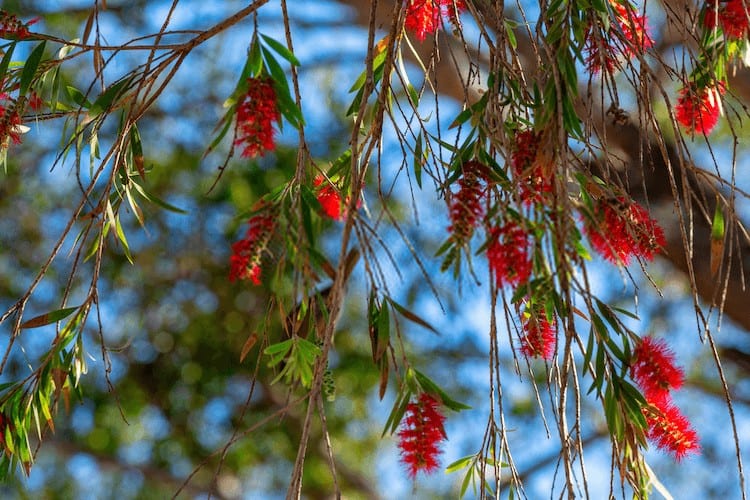
Growing a bottle brush tree in a container requires a compulsory use of well-draining soil. A poor draining soil will cause root rot and other diseases.
Choose a large container that can allow for 2 to 3 years of plant growth. As a tip for choosing the container, choose a pot that is 8 inches wider than the root balls of the plant.
Since plant containers or pots also serve as decorative items around a home, you might choose a pot in a warm color that matches the theme of your home or garden.
Step 1: Lime the bottom of your pot or container with a piece of porous landscape fabric. This would ensure that the drain holes are not stopped with soil.
Step 2: Gently take out the plant from the nursery pot. And if the plant is stuck in the nursery pot, gently cut the container open and take the plant out.
Step 3: Pour a little amount of soil into the container and set your bottle brush plant in the container while adding more soils or removing excess soil. Ensure that the plant’s root ball sits on an inch below the container’s rim.
Step 4: Water the plant and the soil thoroughly until water begins to drain from the holes at the base of the container. Check to note if settling occurred during watering. If it did, add more potting mix.
Step 5: Add half an inch layer of wood chips to the soil surface to help retain moisture and prevent weed growth.
Read Also: How to Grow Blue Star Creeper
How to Care for Bottle Brush Tree
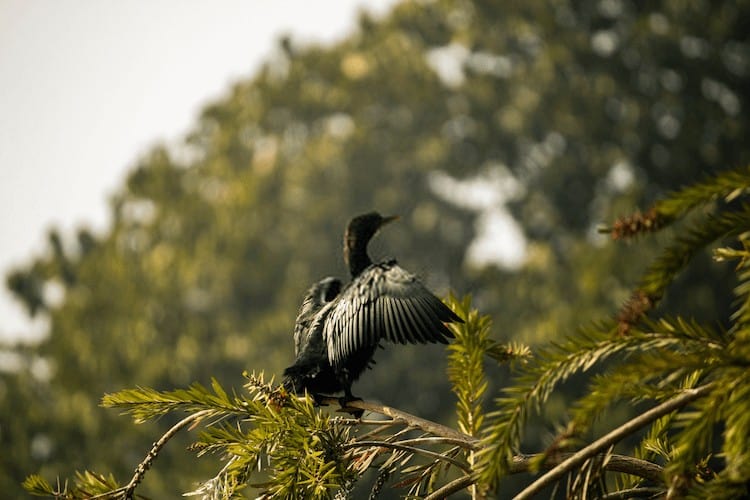
Having gone through how to grow bottle brush tree, let's now look at the best ways to care for bottle brush tree:
Watering
The bottle brush tree requires moderate watering when it is young. During summer and spring, the plant should be watered once every week, if rain hasn’t recently fallen.
Do not overwater the plant as it would cause it to be susceptible to root rot. Bottle brushes do not recover from root rots.
When the bottle brush has been established, you can now provide supplemental irrigation during droughts.
However, established bottle brush trees are tolerant of moderate drought. But when its leaves begin to wilt, you should give the plant some good deep soaking.
Fertilizing Bottle Brush Tree
The best fertilizer to use for bottle brush is either an all-purpose fertilizer or a fertilizer that has an equal part of the three main parts or one that a higher amount of phosphorous in it.
Each of the elements in the fertilizer serves specific purposes in the growth and development of the plant. Phosphorous helps in producing abundant flowers, while nitrogen helps in foliage growth.
In most cases, flower development is usually preferred over leaf growth, so most people opt for fertilizers with a higher amount of phosphorus.
The best time to feed bottle brush tree is in spring, late spring, or in early summer. To avoid encouraging new growth of plants part that would die of during winter frost, stop fertilization two months to winter frost in your area.
For bottle brushes that grow in pots and containers, use fertilizers that are specially made for pot grown plants. Follow the instructional guide for application times and dosages.
The bottle brush tree is vulnerable to fertilizer burn, which causes its leaves to discolor. Therefore whenever you are using a new fertilizer that you are not sure of the suitable quantity to be used, safely use a small amount.
An insufficient amount of fertilizer will cause less harm to the plant than an excess amount.
Read Also: How to Care for Umbrella Plant
Suitable Temperature for Bottlebrush Tree
Being that the bottle brush tree originates from Australia, it thrives in a warm environment. It can also bloom all year round in mild climates.
But if you live in areas where winters get very cold, it is best you grow the plant in a pot so that you can take into your house during cold winter periods.
Best Sunlight for Bottle Brush Tree
The bottle brush tree does well under full sunlight. Adequate sunlight also helps it producing its typical brush-like flowers.
When planting the bottle brush in a garden, ensure to place in an area that it would be exposed to at least 6 hours of sunlight per day.
Keep it away from plants that might tower in height over it, thereby blocking sunlight from it. Or you cut down these encroaching plants from the bottle brush tree.
If your bottle brush is being grown in a pot, then you can move it around to better positions where it can access full sunlight.
Pruning Tips Bottlebrush Tree
Pruning is also regarded as ‘tree forming.’ Bottlebrush trees can be pruned up to form an attractive single or multi-trunk tree.
Before pruning the tree, it is best to allow the tree to grow up to at least 4 – 5 feet high. This would enable you to prune it into any desired shape.
The time at which the bottle brush plant is pruned affects its flowering ability, as continual pruning usually leads to a lack of flower production the next year.
The rule of thumb for pruning bottle brush is to prune it at the start of spring for health purposes, while for maintenance, it should be pruned in both late summer and beginning of spring.
Bottlebrush trees can grow as high as 15 feet and can be pruned down to as low as 8 feet if the initial height isn’t an ideal match for your space.
Despite being a shrub, some people prune the bottle brush into the shape of a tree with long stems and upper umbrella-shaped section.
Pruning a bottle brush tree requires some finesse. While pruning, you should ensure that each cut is made on the branch directly on top of the node.
Like most shrubs, when bottle brush is properly pruned, all of its energy is channeled into flower production.
Thus, pruning encourages flowering from a bottle brush tree, and if you enjoy the bloom, you should prune more often and correctly.
While pruning, remember to cut out any damaged or dead stems. Also, look for inner stems that may have gone brown. Brown inner stems result from a lack of adequate sunlight.
To correct this, thin out plant parts around the areas of the brown stems to allow sunlight to reach into the inner branches.
Read Also: How to Mulch Around Shrubs
Diseases of Bottlebrush Tree
Some of the common diseases of bottle brush tree are powdery mildew, twig gall, verticillium wilt, and root rot. These diseases cause fatal damage to the plant, and as such, it is crucial that you take proper care of your bottle brush tree.
Most of the diseases are caused by fungus; you should, therefore, take care while watering the plant, because fungal diseases are usually waterborne.
Do not over irrigate the plant, and while watering, water the base of the plant to avoid splashes of water resting on the plant’s foliages. Take away diseased plants and parts to prevent re-infection.
Conclusion
How to grow and care for bottle brush is quite minimal but requires finesse, especially during transplanting, watering, and pruning.
Bottlebrush requires more attention at its tender age, but once it establishes, it can do well on its own, requiring little or no care from you.
You should, however, note that potted bottle brushes require slightly more care than bottle brushes grown in the ground. Potted plants would require you to move them around for sunlight and protection against winter frost.
These growing and care tips were well covered in this article, and we hope you found them helpful to plant and nurture your bottle brush tree!

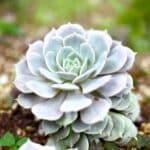

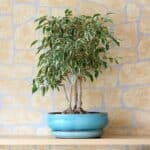
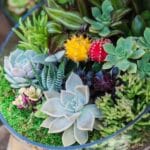
Jillian Wagner
This was very helpful thank you
john van buiten
Thankyou, very useful information.I,m about to plant a 2 year old i think. It,s 1 metre high in a very large pot but prefer to have it in the front garden on its own.It produced a lot of red spikes and looks healthy and I did this 12 years ago with a good result even during a minus 2 temperature so Hoping for the best.Regards John West Sussex